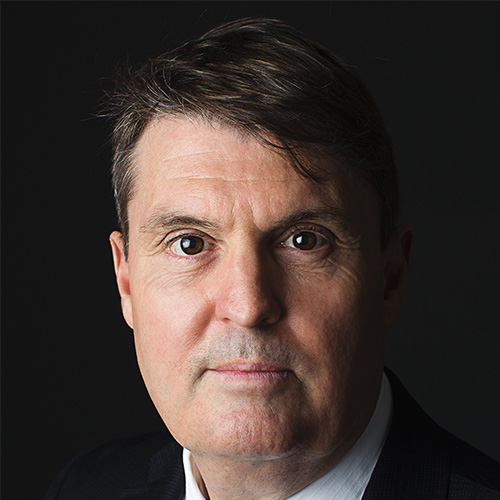Scientific Programme
Sports and Exercise Medicine and Health
IS-MH07 - Emerging perspectives in exercise oncology: insights from exercise-induced cancer suppression to pragmatic implementation Exercise Oncology: New Insights
Date: 03.07.2025, Time: 17:00 - 18:15, Session Room: Arco
Description
Over the past two decades, the significance of exercise medicine and nutrition therapy in cancer management has gained relevance and implementation. There is now extensive research evidence of how exercise influences etiology, development, treatment, and progression of cancer, revealing potential mechanisms of action. Despite these scientific advancements, implementation in oncology remains challenging due to the complexity of cancer and the impact of the treatments. Similarly, nutritional interventions in oncology, while promising, current recommendations are often vague or even contradictory. We will focus on recent advances elucidating the bio-physiological mechanisms across the cancer care continuum and examine the role of exercise and nutrition in this context. Specifically, we will explore exercise medicine as neoadjuvant, adjuvant, rehabilitative and palliative therapy including functional, structural and patient outcomes, explore mechanisms mitigating tumor growth pathways. We will also address the limitations and challenges of applying exercise oncology guidelines in international and Italian clinical settings with the experience within the Italian Group on Exercise Oncology (IGEO). IGEO brings together a multidisciplinary team of researchers, healthcare professionals, and experts in oncology and exercise science to promote and integrate exercise medicine as a crucial component in the care of patients with cancer.
Chair(s)

Valentina Natalucci
University of Milan, Department of Pathophysiology and Transplantation
Italy

Speaker A
Robert Newton
Edith Cowan University, Exercise Medicine Research Institute
Australia
Read CVECSS Rimini 2025: IS-MH07
Exercise medicine as neoadjuvant, adjuvant, rehabilitative and palliative therapy in cancer management
Exercise has been demonstrated to be an effective medicine across the cancer spectrum from initial diagnosis through to palliative and end-of-life care. In this setting it is termed “exercise oncology”. As a neoadjuvant therapy, exercise medicine is highly beneficial in preparing the patient physically and psychologically for the primary cancer treatment. Improving physical fitness, body composition, and overall resilience positions the patient much more favorably to tolerate surgery, chemo, or radiation therapy. The most common application is exercise medicine neoadjuvant to surgery where it has been demonstrated to reduce adverse events during the operation, reduce surgical complications, reduce length of hospital stay, and facilitate recovery. When implemented adjuvant to chemotherapy or radiation therapy, exercise medicine ameliorates side-effects and is increasingly being demonstrated to enhance the effectiveness of the primary therapy through a range of mechanisms. For chemotherapy, exercise increases perfusion through the tumors delivering more chemotherapy to cancer cells. Acute and chronic exercise enhances radiation therapy effectiveness by reducing hypoxia, facilitating the oxygen enhancement effect and innate immune response. On completion of the cancer treatment exercise medicine is used extensively to rehabilitate the patient, facilitating recovery, increasing physical fitness and improving body composition while also reducing the risk of onset of other chronic diseases. In the long-term, ongoing exercise is critical for reducing the risk of cancer recurrence, by creating a more cancer suppressive environment through cytokine signaling and increased immune cell concentration and surveillance, as well as reducing risk of other diseases such as cardiovascular and metabolic that can arise due to prior cancer treatments. For patients with incurable cancer, exercise medicine has an important role through to end of life by slowing decline in physical function, quality of life, and mental health with emerging research being reported as causative extension of survival. In this presentation we will explore all these quite amazing aspects of exercise medicine in the management of patients with cancer. Medical doctors, oncologists, nurses, clinical exercise physiologists, physiotherapists, fitness professionals, patients and carers will find this presentation of interest as it will create an understanding of the critical role of exercise medicine for all people going through a cancer journey.

Speaker B
Valentina Natalucci
University of Milan, Department of Pathophysiology and Transplantation
Italy
Read CVECSS Rimini 2025: IS-MH07
Towards optimal dose and type of exercise for cancer care: Insights from molecular mechanisms
To maintain cellular homeostasis, cells must reside in an optimal environment, have the capacity to sense surrounding signals, and respond to these cues precisely. In cancer, however, this balance is disrupted, and communication between healthy and malignant cells no longer conforms to normal regulatory mechanisms. Cancer progression is frequently driven by the dysregulation of multiple cellular pathways, where dysfunctions across various molecular circuits facilitate malignant transformation. Efforts to counteract these processes often impact multiple cellular pathways, highlighting the complexity of targeting cancer biology. Within this intricate landscape and in an era marked by precision oncology, cancer prevention strategies have evolved to address the multifaceted process of carcinogenesis. Recently, these strategies have broadened to integrate exercise medicine and nutritional therapy throughout the continuum of cancer care. These approaches aim to reduce cancer incidence and inhibit tumor progression by addressing metabolic and cellular vulnerabilities in cancer. Exercise requires skeletal muscle to engage in “crosstalk” with other organs through voluntary contractions. This inter-organ communication induces biomechanical and metabolic adaptations in skeletal muscle, cardiac tissue, and adipose tissue, as well as systemic changes that have shown potential to modulate tumor biology and improve clinical outcomes. Both preclinical and clinical studies show that exercise-conditioned serum, derived from human subjects pre- and post-exercise, exhibits inhibitory effects on cancer cell growth (e.g., reducing proliferation and metastatic potential) and survival (e.g., diminishing cell viability), while also increasing cell death via apoptosis and necrosis across various tumor types. These findings underscore the therapeutic promise of exercise in oncology and its role in potentially improving patient outcomes. In both acute and chronic contexts, each component of exercise—defined by the FITT-VP principle (frequency, intensity, time, type, volume, and progression)—is essential for mediating the effects. Current evidence is that a single session of moderate-to-vigorous intensity aerobic exercise can exert suppressive effects on cancer cells and lead to significant increases in circulating bioactive factors. Conversely, in structured training programs (whether short-term or chronic), training volume appears to be a key factor in modulating cancer cell inhibition and altering circulating factors, regardless of the specific mode of exercise used. However, the question remains unanswered:

How to effectively implement exercise as a strategy to support patients with cancer in the real-world setting?
Physical activity and exercise have been proven to confer several important benefits to patients with cancer. There is an inverse relationship between physical activity and mortality, and preclinical evidence supports these findings, highlighting how exercise may slow tumor progression. Beyond the possible impact on prognosis, exercise has been confirmed to be important supportive care during the cancer journey by optimizing patients’ physical fitness, managing symptoms and treatment-related side effects, and enhancing effectiveness of other cancer treatments and quality of life. Several national and international scientific societies, including the American College of Sports Medicine, the American Cancer Society, and Exercise and Sports Science Australia, have proposed dedicated guidelines for exercise in cancer and strongly recommend avoiding inactivity and engaging in regular exercise. Despite the benefits and published guidelines, a large number of patients affected by cancer are insufficiently active. In this regard, a recent multicenter investigation conducted in Italy on 549 patients found that 92% did not reach a sufficient level of physical activity. Implementing exercise in oncology is far from simple. Patients themselves may face several obstacles in starting an exercise program, ranging from the adverse events or sequelae experienced during cancer treatment, such as fatigue, dyspnea, and loss of muscle mass, to non-health related issues, including lack of dedicated guidance from experienced experts, lack of family support and distance from facilities. In addition, the scarce knowledge about the beneficial role of exercise and the confidence in its promotion by oncologists and healthcare professionals may negatively influence the adoption of physical activity or targeted exercise medicine among patients. In a multi-level view, even just the word cancer inspires fear among lay people, with more than half of the general population afraid of cancer more than other diseases. These cultural myths and beliefs have led patients with cancer to be stigmatized, isolated from social life, and should not perform activities such as exercise. In this presentation, we will explore all these challenging aspects, the barriers and facilitators concurring in an effective exercise implementation in the cancer context. Several stakeholders, including clinicians, exercise specialists, physiotherapists, oncologists, healthcare professionals, patients, and their caregivers, may find this presentation appealing.
